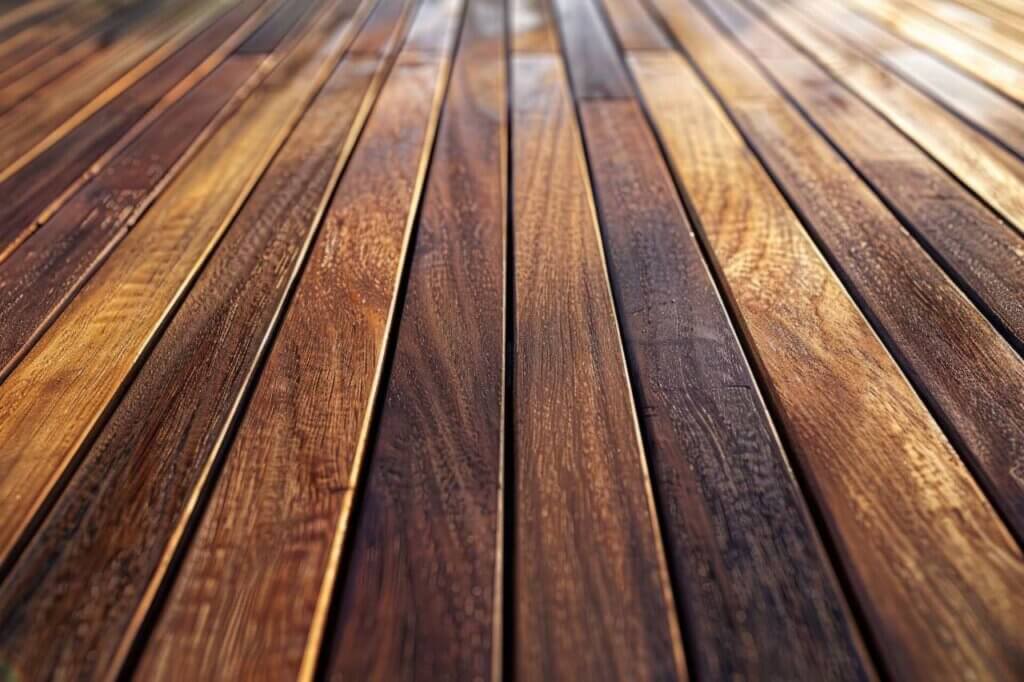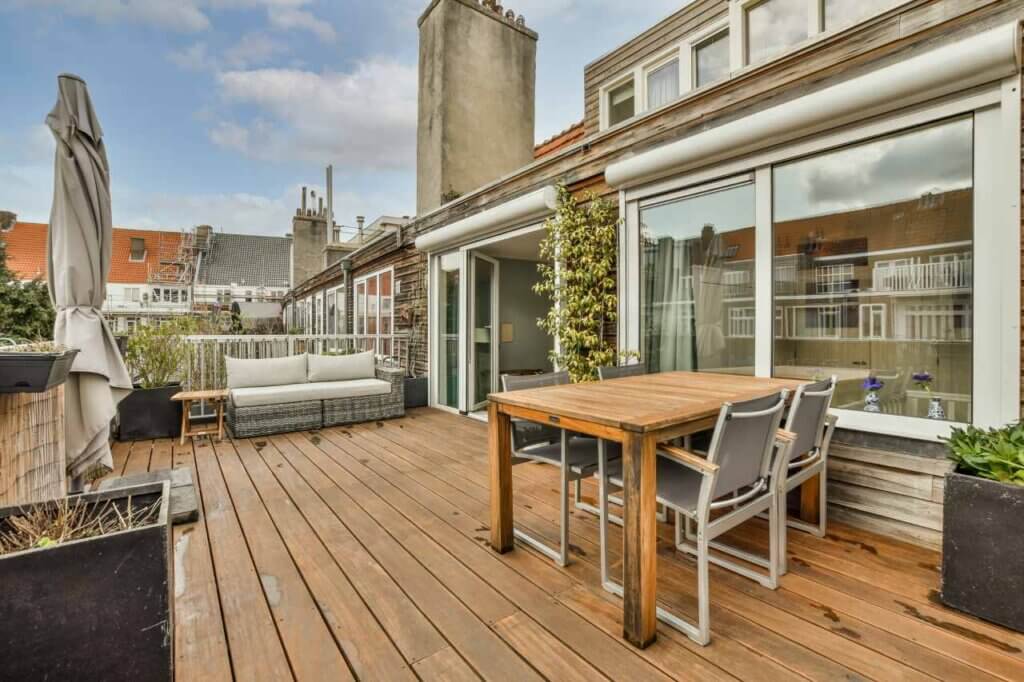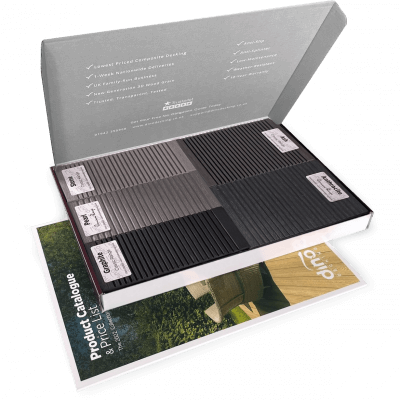5 Composite Decking Lighting Ideas
Our composite decking looks great in any setting, but you can really make your outdoor spaces shine with our decking
Products in Stock
Lowest Prices
Express Delivery
10-Year Warranty
Bank Holiday Weekend Sale. Up To 15% Off.

If you’re considering options for your outdoor space, you may have come across Ipe decking. This premium hardwood has gained popularity in recent years for its stunning appearance and impressive durability. But what exactly is Ipe decking, and is it the right choice for your home? In this post, we’ll dive into everything you need to know to make an informed decision.
Ipe (pronounced “EE-pay”) is a dense hardwood that comes from the Tabebuia tree species, native to the tropical regions of Central and South America. Also known as Brazilian Walnut, Ipe is one of the hardest woods on the market, with a Janka hardness rating of 3680 lbf. To put that in perspective, that’s nearly three times harder than oak!
Ipe decking boards are typically dark brown in colour with a tight, straight grain pattern. The wood is naturally resistant to rot, decay, and insect damage, making it an ideal choice for outdoor applications.
One of the biggest selling points of Ipe decking is its exceptional durability. With proper installation and maintenance, an Ipe deck can last 50 years or more. The wood’s dense structure and natural oils make it highly resistant to the elements, including UV rays, moisture, and extreme temperatures. In fact, Ipe is so tough that it’s often used for commercial applications like boardwalks and marinas.
Let’s be honest – Ipe is a stunning wood. Its rich, warm tones and sleek grain pattern lend an air of luxury to any outdoor space. Over time, Ipe will naturally weather to a elegant silver-grey patina, or it can be oiled to maintain its original colour. Either way, an Ipe deck is sure to be a conversation starter at your next garden party.
Despite its high-end look, Ipe decking is surprisingly low maintenance. Unlike softwoods that require annual staining or painting, Ipe needs only occasional cleaning and oiling to stay in top condition. With a bit of regular upkeep, your Ipe deck will maintain its beauty for decades to come.
While Ipe is undeniably a durable and attractive choice, it’s important to consider the environmental impact of tropical hardwoods. Look for Ipe that is certified by the Forest Stewardship Council (FSC) to ensure it comes from responsibly managed forests. Many Ipe suppliers also offer reclaimed or salvaged options, which can be a more eco-friendly choice.
There’s no getting around it – Ipe decking comes with a premium price tag. The wood’s scarcity and high demand mean that Ipe boards can cost several times more than pressure-treated pine or even other hardwoods like oak. However, many homeowners find that the long-term durability and low maintenance requirements of Ipe justify the initial investment.
Installing an Ipe deck is not a job for the faint of heart. The wood’s density can make it challenging to cut and drill, and special tools may be required. For the best results, it’s often worth hiring a professional deck builder with experience working with Ipe.
While Ipe decking requires less maintenance than other woods, it’s not entirely maintenance-free. To keep your deck looking its best, you’ll need to clean it regularly and apply a penetrating oil every year or two. For added protection, consider using a quality deck sealer.
In addition to its higher cost and installation challenges, there are a few other potential drawbacks to Ipe decking. The wood’s density can make it feel quite hard underfoot, which some people may find uncomfortable. Ipe can also be prone to surface checking (small cracks) over time, although this is usually considered a natural part of the wood’s ageing process.

If you love the look of Ipe but are concerned about the cost or environmental impact, composite decking may be a worthy alternative. Made from a blend of wood fibres and recycled plastics, composite decking offers similar durability and low maintenance benefits to Ipe, often at a lower price point. Many premium composites even mimic the rich, variegated tones of tropical hardwoods.
On the other end of the spectrum, pressure-treated softwoods like pine are a budget-friendly decking option. While they may require more frequent maintenance and replacement than Ipe, pressure-treated decks can still provide a functional and attractive outdoor space.
Ipe is not the only hardwood decking option out there. Other popular choices include Cumaru, Tigerwood, and Massaranduba. Each has its own unique look and characteristics, so it’s worth exploring a range of hardwoods to find the best fit for your style and budget.
Choosing the right decking material is a big decision, and Ipe is certainly a top contender for those who prioritise durability and beauty. Of course, there’s no one-size-fits-all solution, so if you’re unsure whether Ipe is right for you, consider ordering a sample of our quality composite decking boards to compare. And if you’re still unsure, don’t hesitate to reach out to a member of our team for a quick chat.

Our sample pack contains a sample piece of each colour currently available. Order your free sample pack today to compare the colours and get a true feeling of the Dino Decking range!
Our composite decking looks great in any setting, but you can really make your outdoor spaces shine with our decking
If the idea of having rats under your decking makes you shiver, don’t worry. We’ll let you know the signs
Business hours
Monday: 09:00 – 17:30
Tuesday: 09:00 – 17:30
Wednesday: 09:00 – 17:30
Thursday: 09:00 – 17:30
Friday: 09:00 – 17:30
Saturday: Closed
Sunday: Closed
Contact us
01942 355968
support@dino.co.uk
Collection Address: Unit 1 Wetheral Close Hindley Ind Estate Wigan Greater Manchester North West WN2 4HS
Pages
Products
Testing
Copyright 2025 Dino Decking Ltd All Rights Reserved.
VAT Number: GB296097848.
Company Number: 10837233.